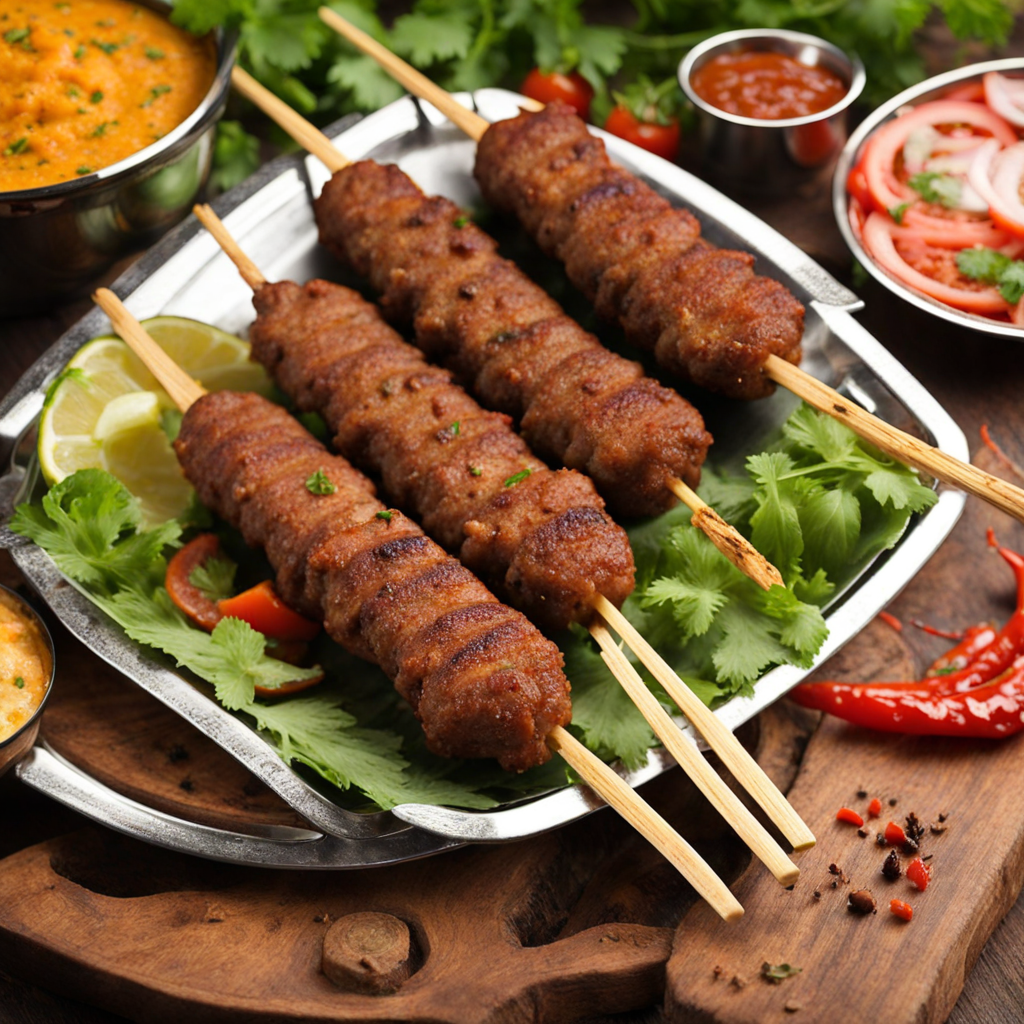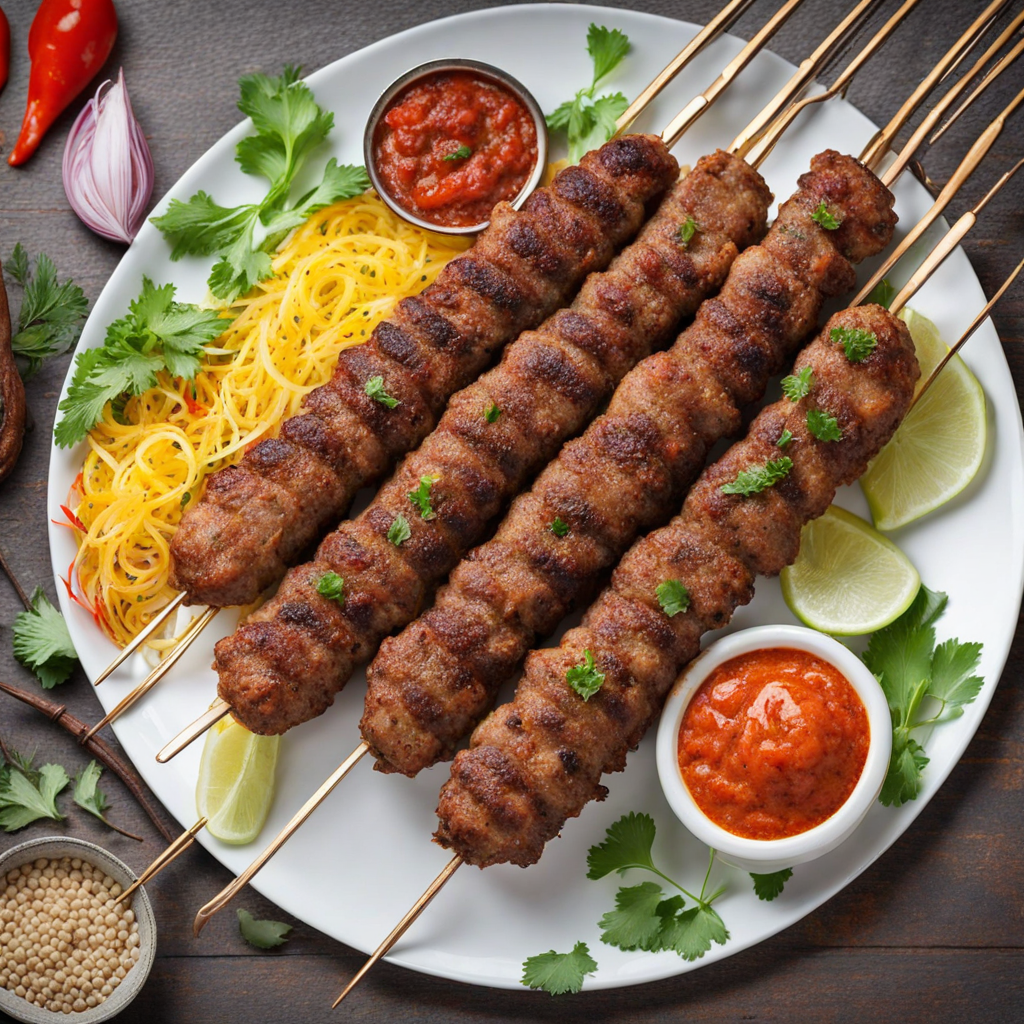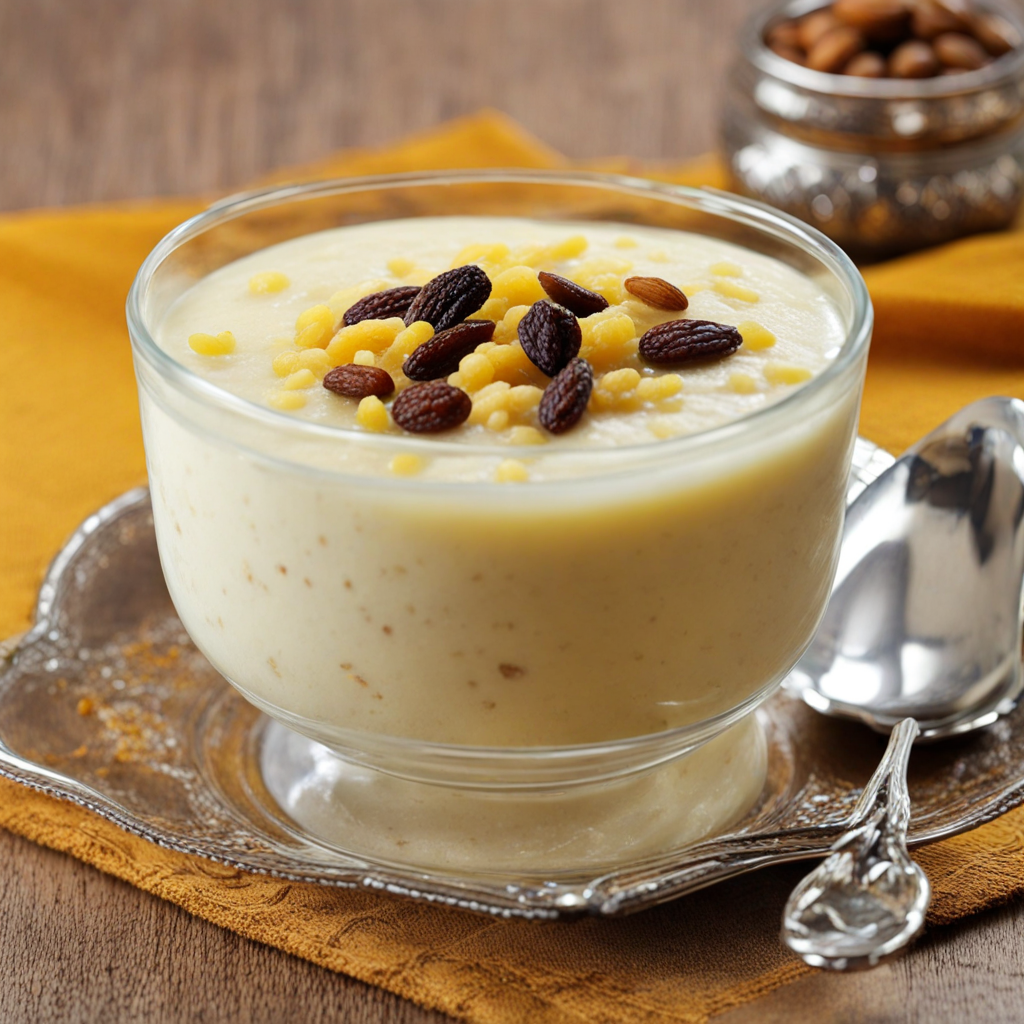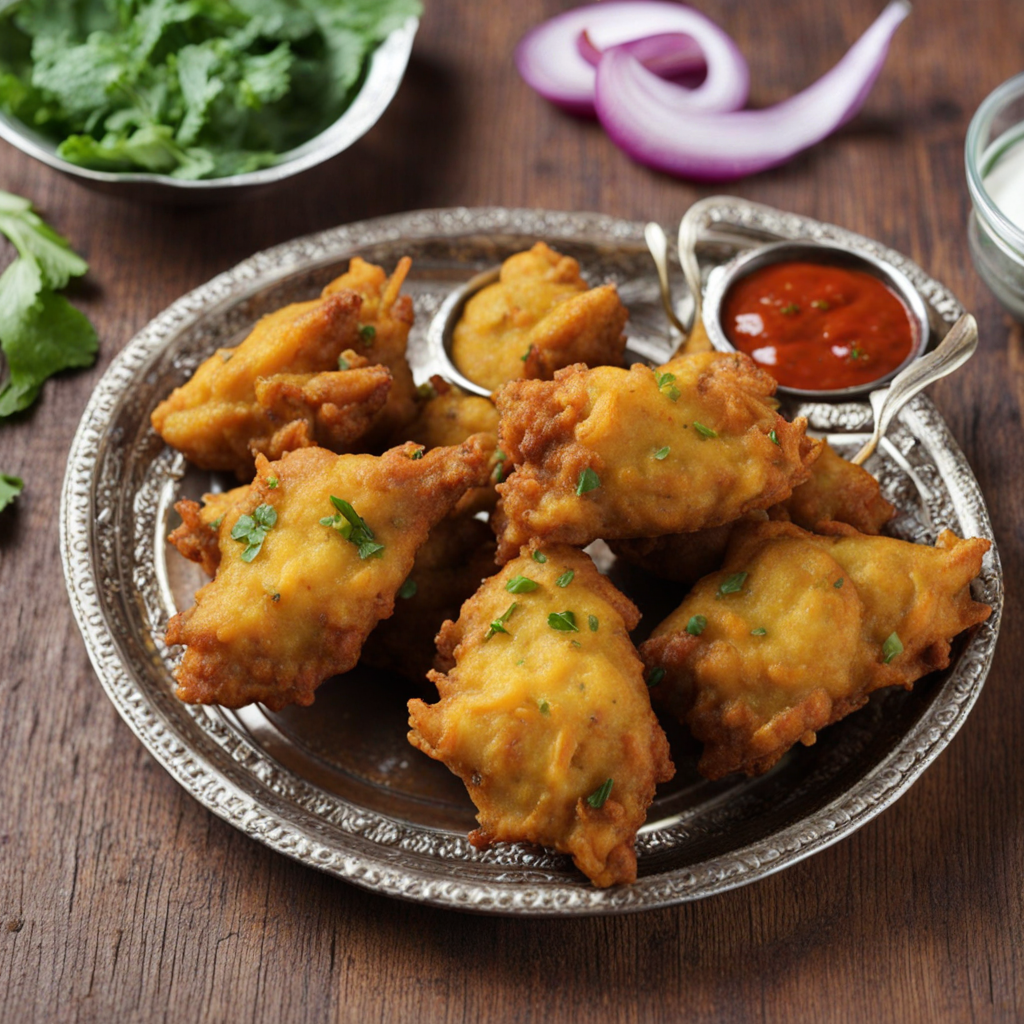Seekh Kebab
Seekh Kebab is a delectable dish that hails from the rich culinary traditions of Pakistan, showcasing a perfect blend of spices and textures. Made from minced meat, typically beef or lamb, the meat is marinated with an array of aromatic spices, including cumin, coriander, garam masala, and green chilies. This mixture is then molded onto skewers, often incorporating finely chopped onions, garlic, and fresh herbs like cilantro or mint to enhance the flavor profile. The kebabs are then grilled over open flames or cooked in a tandoor, allowing the smoky essence to permeate the meat, resulting in a juicy, tender bite that is bursting with flavor. The preparation of Seekh Kebab is an art form in itself, as the right balance of spices and cooking technique is crucial to achieving the perfect texture and taste. When cooked, the kebabs develop a beautiful char on the outside while remaining succulent on the inside. They can be served as an appetizer or main dish, often accompanied by a vibrant assortment of chutneys, sliced onions, and lemon wedges, which offer a refreshing contrast to the rich, spiced meat. Each bite reveals layers of complexity, inviting you to savor the intricate flavors that define Pakistani cuisine. Seekh Kebab is not just a dish but a cultural experience that reflects the warmth and hospitality of Pakistani dining. It is commonly enjoyed during family gatherings and festive occasions, making it a beloved favorite among locals and visitors alike. The popularity of Seekh Kebab has transcended borders, inspiring variations in other cuisines while retaining its authentic roots. Whether you enjoy it wrapped in naan bread or served with fragrant rice, Seekh Kebab promises to take your taste buds on an exciting journey, making it a must-try for any food enthusiast.
How It Became This Dish
The History and Cultural Significance of سیخ کباب (Seekh Kebab) in Pakistan Seekh kebab, known as سیخ کباب in Urdu, is a beloved dish in Pakistan, celebrated for its rich flavors and succulent texture. This dish, with its spiced minced meat molded onto skewers and grilled to perfection, is emblematic of the vibrant culinary landscape of South Asia. Its origins, cultural significance, and evolution over time offer a fascinating glimpse into the history of food in the region. #### Origins The roots of seekh kebab can be traced back to the Middle Eastern and Central Asian culinary traditions. The word "kebab" itself is derived from the Arabic word "kabab," which refers to grilled or roasted meat. The practice of grilling meat on skewers has ancient origins, with evidence suggesting that various forms of kebabs have been enjoyed since at least the 9th century. As different cultures interacted through trade, conquest, and migration, the kebab evolved, absorbing diverse spices, methods of preparation, and cooking techniques. In the Indian subcontinent, the kebab gained prominence during the Mughal Empire (1526-1857). The Mughals, who were of Central Asian descent, brought with them a rich culinary heritage that blended Persian and Indian flavors. This period marked a significant evolution in the preparation of meat dishes, with the introduction of marination techniques and distinctive spice blends. Seekh kebab, characterized by its finely minced meat mixed with aromatic spices and herbs, likely emerged during this time, becoming a popular dish in royal kitchens and among the nobility. #### Cultural Significance Seekh kebab holds a special place in Pakistani culture, transcending mere sustenance to embody tradition, hospitality, and communal bonding. It is often associated with celebrations and gatherings, serving as a staple at weddings, festivals, and family reunions. The process of preparing and grilling seekh kebabs is often a communal activity, where friends and family come together to share not only food but also stories and laughter. In Pakistani cuisine, seekh kebab is typically made from minced beef or mutton, although chicken and even vegetarian versions have gained popularity. The meat is seasoned with a blend of spices, which may include cumin, coriander, garam masala, and green chilies, along with fresh herbs like cilantro and mint. The mixture is then molded around long metal skewers and grilled over an open flame or on a tandoor, imparting a smoky flavor that is highly coveted. Seekh kebab is often served with naan or paratha, accompanied by chutneys, salads, and yogurt-based sauces. This combination not only enhances the dish's flavor profile but also reflects the traditional Pakistani approach to meals as a shared experience. The act of breaking bread together, especially with a dish like seekh kebab, is a cherished aspect of Pakistani hospitality. #### Development Over Time As Pakistan emerged as a nation in 1947, the culinary landscape began to evolve, influenced by regional tastes, migration patterns, and globalization. Seekh kebab, while retaining its traditional roots, began to adapt to contemporary preferences and cooking methods. The rise of urban centers, coupled with changing lifestyles, led to the proliferation of eateries, street food stalls, and restaurants specializing in kebabs. In urban areas, seekh kebab became a popular street food, with vendors grilling the skewers over charcoal and serving them with spicy chutneys and bread. This accessibility allowed for the dish to reach a broader audience, from bustling markets to late-night food stalls. The demand for quick, flavorful meals led to innovative variations, such as seekh kebab rolls, where the kebab is wrapped in naan along with fresh vegetables and sauces, catering to the fast-paced lives of city dwellers. Furthermore, the diaspora has played a crucial role in the evolution of seekh kebab. As Pakistanis migrated to various parts of the world, they took their culinary traditions with them. Seekh kebab found its way to the streets of London, Toronto, and New York, where it was embraced by diverse communities. This cross-cultural exchange led to the introduction of new ingredients and variations, resulting in a fusion of flavors that still honors the classic recipe. In recent years, there has been a growing movement towards sustainable and organic food practices within Pakistan. This has prompted chefs and home cooks to explore locally sourced ingredients, which has impacted the preparation of seekh kebab. Chefs are now experimenting with different meats, such as turkey or lamb, and incorporating regional spices that reflect local agricultural practices. #### Seekh Kebab in Contemporary Cuisine Today, seekh kebab remains a staple in both traditional and modern Pakistani cuisine. It is celebrated in restaurants, served at high-end dining establishments, and featured at food festivals. The dish is often highlighted for its versatility, allowing chefs to play with flavors and presentations while maintaining the essence of the original recipe. Moreover, social media has played a significant role in popularizing seekh kebab among younger generations. Food bloggers and influencers showcase creative takes on the dish, encouraging home cooks to experiment with different spices and cooking methods. Online recipes and cooking shows have made it easier for people worldwide to recreate this beloved dish in their own kitchens, further solidifying its status as a global culinary treasure. #### Conclusion Seekh kebab is more than just a dish; it is a symbol of cultural identity, community, and culinary artistry. From its ancient origins to its modern adaptations, seekh kebab has withstood the test of time, reflecting the rich tapestry of flavors and traditions that define Pakistani cuisine. It embodies the spirit of hospitality, inviting people to gather, share, and celebrate life’s moments around a warm grill. As it continues to evolve, seekh kebab remains a testament to the enduring power of food to connect us across generations and cultures.
You may like
Discover local flavors from Pakistan







